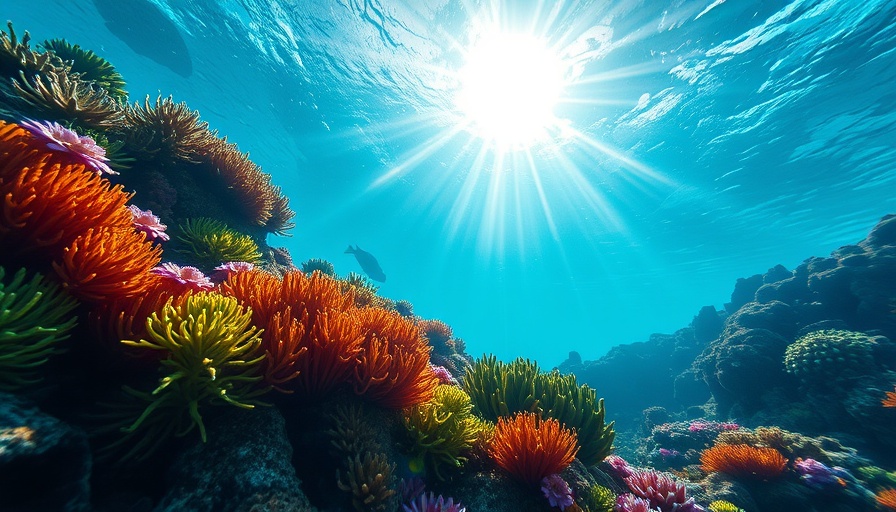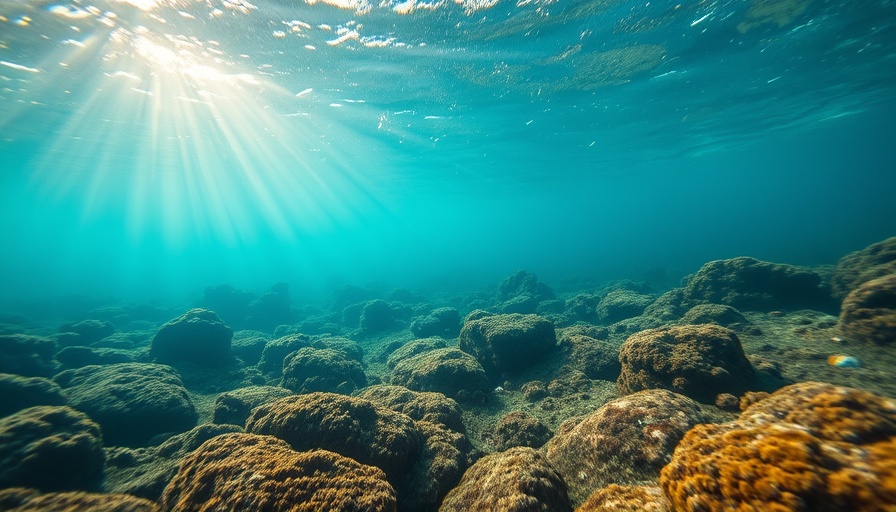
Urgent Climate Alert: Methane Leaks from Antarctica's Ocean Floor
Recent discoveries off the coast of Antarctica have alarmed scientists around the globe. Researchers have uncovered numerous new methane seeps emerging from the seabed in the Ross Sea, indicating significant changes in this previously stable environment as a result of climate change. With over 40 new seep sites identified, experts are raising concerns about the implications for global warming and marine ecosystems.
What Are Methane Seeps and Why Do They Matter?
Methane seeps are natural openings in the Earth’s crust where methane, a potent greenhouse gas, escapes into the ocean. Methane is approximately 28 to 34 times more effective than carbon dioxide at trapping heat in the atmosphere over a 100-year period, making its release a critical concern for climate scientists. This recent phenomenon signals a potential shift in Antarctic climate dynamics, suggesting that the region may no longer act as a buffer against rapid climate change.
The Mechanism Behind the Methane Leak
The sudden appearance of these new seeps, which were not previously documented despite decades of research, suggests that they have formed quite recently. The ongoing melting of polar ice and changes in underwater pressure could be facilitating this gas release. Sarah Seabrook, a marine scientist involved in the research, noted that while methane emissions from tropical and temperate regions have long been monitored, Antarctic contributions could transform this landscape.
Impacts on Marine Ecosystems
Around the newly identified seeps, scientists are observing changes in marine life. Some areas are experiencing die-offs, while others are seeing an influx of bacteria that thrive on methane. Such shifts could affect the entire food chain, from tiny microorganisms to larger fish and seabirds, showing that these changes have far-reaching consequences on the existing marine ecosystems.
Risks of a Feedback Loop
The situation poses the risk of a feedback loop: as more methane enters the atmosphere, it contributes to further warming, which in turn could lead to more methane leaks. According to Andrew Thurber, a marine biology professor, the gradual increase in methane levels underscores an urgent need for comprehensive studies to understand the long-term impacts of these emissions.
Historical Context: Lessons from the Arctic
Similar methane leaks have been documented in the Arctic, where warming temperatures and geological changes have triggered the release of methane hydrates. Researchers indicate that the Arctic's experiences may serve as a cautionary tale for Antarctica, where conditions conducive to leaks are now emerging. Since 1999, increasing seawater temperatures in the region have already shown a correlation with methane emissions.
Future Research Directions
Following the startling discoveries, scientists are launching expeditions to further investigate these methane seeps. Ongoing research aims to analyze the dynamics of these emissions and their potential contribution to climate change. By integrating findings from both the Arctic and Antarctic, researchers hope to develop better climate models that can more accurately predict future warming scenarios.
Act Now to Understand and Mitigate Risks
Given the serious threat posed by these newly discovered methane seeps, it is imperative for the scientific community and policymakers alike to prioritize monitoring efforts and explore mitigation strategies. Understanding the complex interactions between climate change and methane emissions will be crucial in formulating effective responses to combat global warming.
As we become more aware of the interconnectedness of the Earth's systems, it highlights the urgency for collective action to address climate change. The risks associated with methane leaks in Antarctica symbolize broader environmental changes that could impact the entire planet.
 Rij toevoegen
Rij toevoegen






Write A Comment